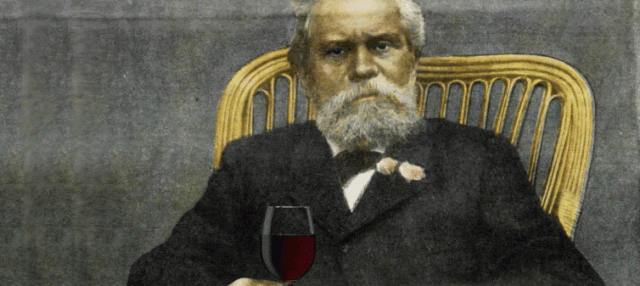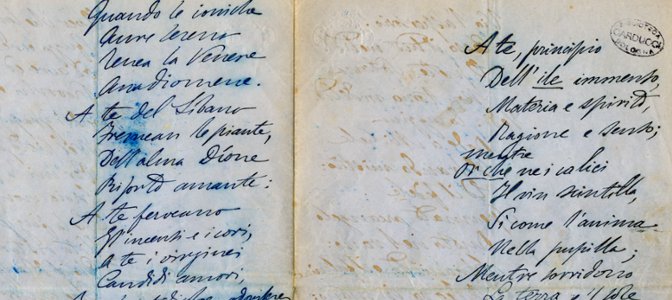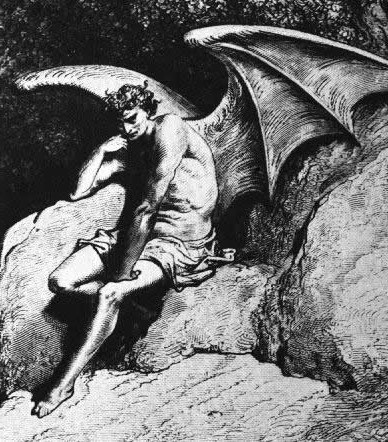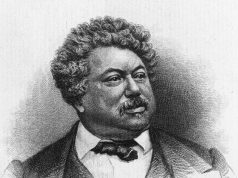
Giosuè Carducci, an author often – and erroneously – presented as the spokesman of classical and pedantic literature, sparked off many controversies with the Hymn to Satan in response to the propaganda and writings of Pope Pius IX.
Like pale meteors,
spent worlds,
the angels drop
from the firmament
Hymn to Satan, a failed vade retro

The Hymn to Satan is a composition carved in the form of the Greek anthem, modernised and lightened on the model of the toast. Thus we have, on the one hand, the typical inspiration of a rhetoric that wants to explain noble arguments, of mythological and historical matrix, and on the other hand a hilarious, sudden, playful attitude.
Put aside your sprinkler,
priest, and your litanies!
No, priest, Satan
does not retreat!
The famous form of the “vade retro Satana” acts as a rhythmic glue along the sound scale of the opera. It almost seems to listen to the thundering voice of a vicar of God who tries to send away the jubilation of sensual, joyful, material images that Carducci uses to give the reader the idea of a new hell on earth.
Just imagine a quick and lightning-fast piano scale. This will be the effect of the complete reading of the Hymn to Satan, which focuses on the ABCB rimic pattern, making it even darker and at the same time sublime – in the literary sense of the term, therefore conceivable as “high”, “immense”, of all momentum. It is no coincidence that revenge on the Archangel Michael is seen in front of us like a painting in motion.
The praise of wisdom
Satanism was born first of all as a literary category, to indicate those authors who found in the fallen angel the symbol of human emancipation. It has therefore no religious meaning, not in this place and not in the perspective of the intellectuals of the nineteenth century. It is enough to think of the interpretation of the pentacle, whose point turned upwards, in this cultural perspective, affirms the full autonomy of man with respect to any divinity.
You breathe, O Satan
in my verses,
when from my heart explodes
a challenge to the god
Of wicked pontiffs,
bloody kings;
and like lightning you
shock men’s minds.
Against the evil pontiffs, the cruel regents of human destiny. This distic sums up the true essence of the Hymn to Satan: the destruction of all slavery. We are talking about this. Not of evils or rituals, but of an almost philosophical precept. As a human being, accomplished in myself, I do not need to follow any law of God or of men. Only mine and that of my instinct, which in this case can only be expressed in art.
Satan, only Lucifer?

Satan, Beelzebub, Lucifer – the lord of the underworld has known many names, different transpositions, ranging from the most varied mythologies. But for Carducci, a convinced Bolognese Freemason, who praised his creative power, what divinity is it?
On the one hand, Carducci’s Satan is a sort of macrostructure, within which we can find the ancient pagan deities, so dear to the poet and forgotten by the suffocating Christianity of Italy at the turn of the nineteenth and twentieth centuries. Olympian gods and myths capable of releasing a primordial energy, from which to draw to give life, in every human field, to progress.
Hail, O Satan
O rebellion,
O you avenging force
of human reason!
Avenging force of reason. A Satan hero of modern times. Carducci sees in the demonic king the supreme synthesis of the classical impulse – made of pure nature and great intelligence – and of modernity. From this point of view, an area, a train, an electric network can become the face of the devil. They are man’s creations for man. Without censorship. Without fear, above all.












